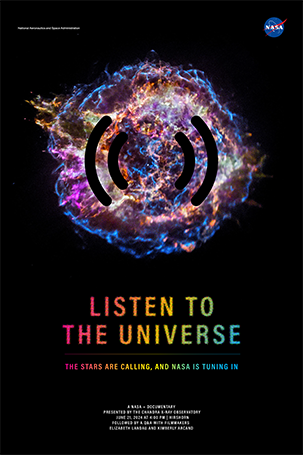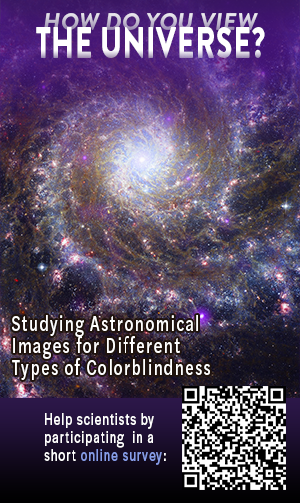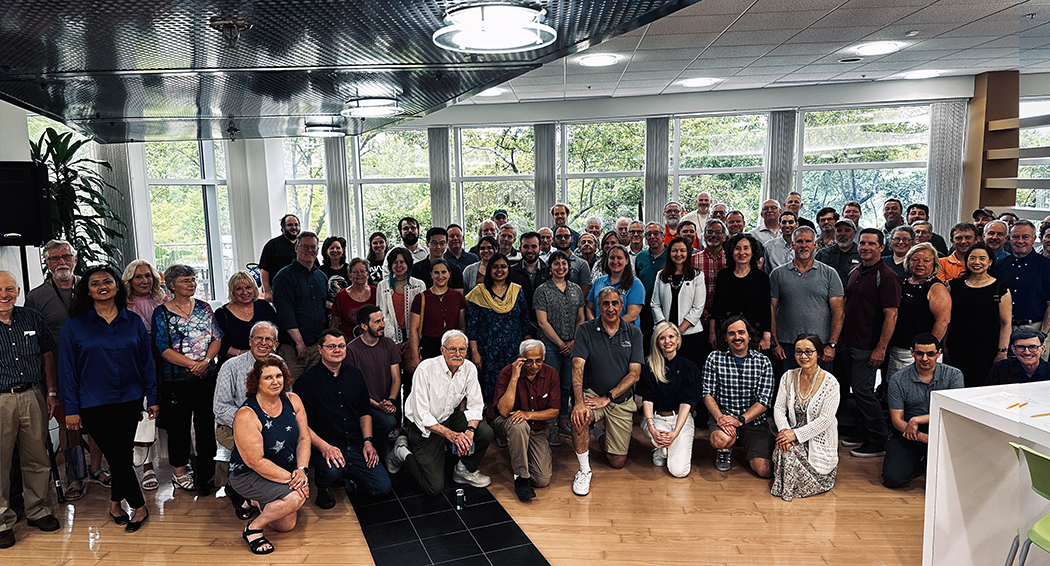General
The Universe Within Reach: NASA Universe of Learning Visits Perkins School for the Blind
On May 16, 2025, learners at the Perkins School for the Blind Library in Massachusetts had the chance to feel the universe—literally.
In a special day-long event hosted by Nance Wolk of the Chandra X-ray Center, and part of NASA’s Universe of Learning team, nearly 50 attendees explored the cosmos through touch and sound.
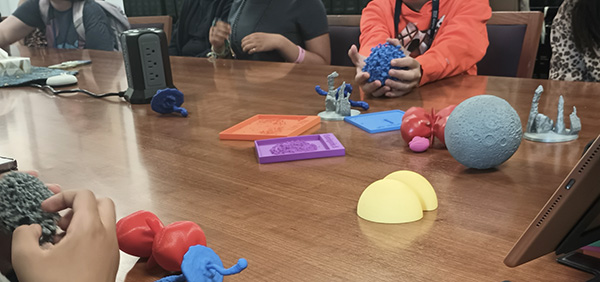
How is that possible? In recent years, NASA’s science missions have developed ways to translate data from its telescopes in space into formats that can be explored using different senses. NASA’s Chandra X-ray Observatory, which has its headquarters in Cambridge, MA, is one of missions that leads this effort. Chandra is also a member of NASA’s Universe of Learning, which aims to deliver content to learners in innovative and engaging ways.
AI Discovers Hidden Extragalactic X-ray Flash in Chandra’s Archival Data
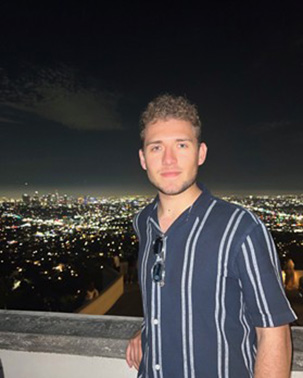
Steven Dillmann
We welcome Steven Dillmann as a guest blogger. Steven is a PhD student in Computational Mathematics at Stanford University, and previously graduated from the University of Cambridge with an MPhil in Data Intensive Science. His research interests revolve around leveraging modern advances in artificial intelligence (AI) to accelerate and enable scientific discovery in data-intensive disciplines like astronomy. Previous experiences include internships at the European Space Agency on studying the impact of satellite constellations on Hubble astronomy and at NASA JPL on studying cloud populations on Mars with citizen science and machine learning.
Together with Rafael Martínez-Galarza (Deputy Director of AstroAI at the Center for Astrophysics | Harvard & Smithsonian and formerly of the Chandra X-ray Center), Steven developed the first representation learning approach to search for rare high-energy transients in the Chandra archive which led to the discovery of the new extragalactic fast X-ray transient XRT 200515. The result was published in a recent paper and was the subject of a press release from the Royal Astronomical Society. More details about the discovery are explained in this post.
Have you ever flipped through old photo albums and suddenly found something fascinating hidden in the background of a picture that no one had ever noticed before? Now imagine doing that on a cosmic scale.
Using a novel machine learning approach, we looked back through over 20 years of archived observations from NASA's Chandra X-ray Observatory and discovered a remarkable, powerful X-ray flash from an unknown object outside our own galaxy that had gone unnoticed for years within the vast Chandra archive — a true needle in the haystack event.
Isaacman Visit to Chandra Operations Control Center
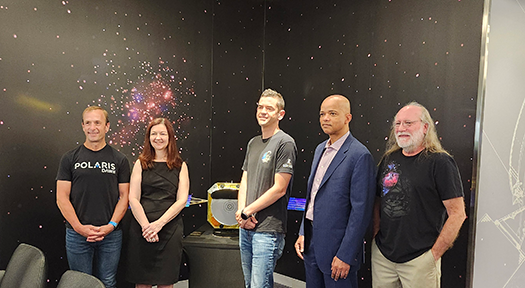
From left to right: Scott “Kidd” Poteet, Lisa Kewley, Jared Isaacman, Bob Curbeam, Pat Slane
Credit: NASA/CXC/SAO/J.McDowell
Last June, the Chandra X-ray Center had the privilege of welcoming Commander Jared Isaacman to our Operations Control Center (OCC). This facility is Chandra’s “mission control” where engineers and scientists communicate with the telescope and receive its invaluable data.
New Performance Helps Connect Science Through Music
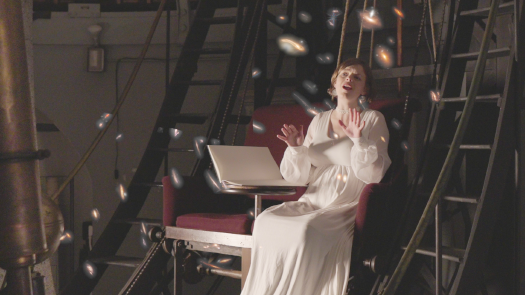
Agnes Coakley Cox, soprano, sings in "Luminosity"
Credit: David Ibbett, Center for Astrophysics | Harvard & Smithsonian (CfA)
A new composition, performed live for the first time on December 14th at the Black Hole Symphony at the Christine McAuliffe Center, is helping people discover science through music.
David Ibbett is Resident Composer at the Center for Astrophysics | Harvard & Smithsonian (CfA), Professor of Music at Worcester Polytechnic Institute, and the Director of Multiverse Concert Series. His new “Voice of the Universe” project uses music to shed light on astrophysical data and images.
The first song to be released, entitled “Luminosity,” was created from the image SMACS 0723 made from data from NASA’s Chandra X-ray Observatory and James Webb Space Telescope. Different parts of the image are sonified in different ways. Sonification is the process of translating astronomical data into sound using scientific and mathematical mapping. This allows humans to engage with data from the cosmos using one of their senses other than sight.
"Above and Beyond" Celebrates Chandra and CfA at the Hirshhorn
A symphonic event at the Smithsonian’s Hirshhorn Museum and Sculpture Garden on November 16th 2024 provided a remarkable opportunity to celebrate 25 years with the Chandra X-ray Observatory on the Mall in Washington, D.C. The free program, entitled "Above and Beyond," was built around Chandra’s milestone anniversary and featured the premiere of "Where Parallel Lines Converge." This original piece by composer Sophie Kastner, created with Chandra and alongside CXC experts, was inspired by the Chandra sonifications of the Galactic Center region. The ensemble musicians were from the 21st Century Consort and their performance was outstanding. In addition to the music, there was a selection of space imagery/video that helped showcase Chandra science. Dr. Kimberly Arcand of the Center for Astrophysics | Harvard & Smithsonian (CfA) was on hand for a special conductor’s discussion and question-and-answer session before the performance along with other invited guests, and there was a brief reception afterwards.
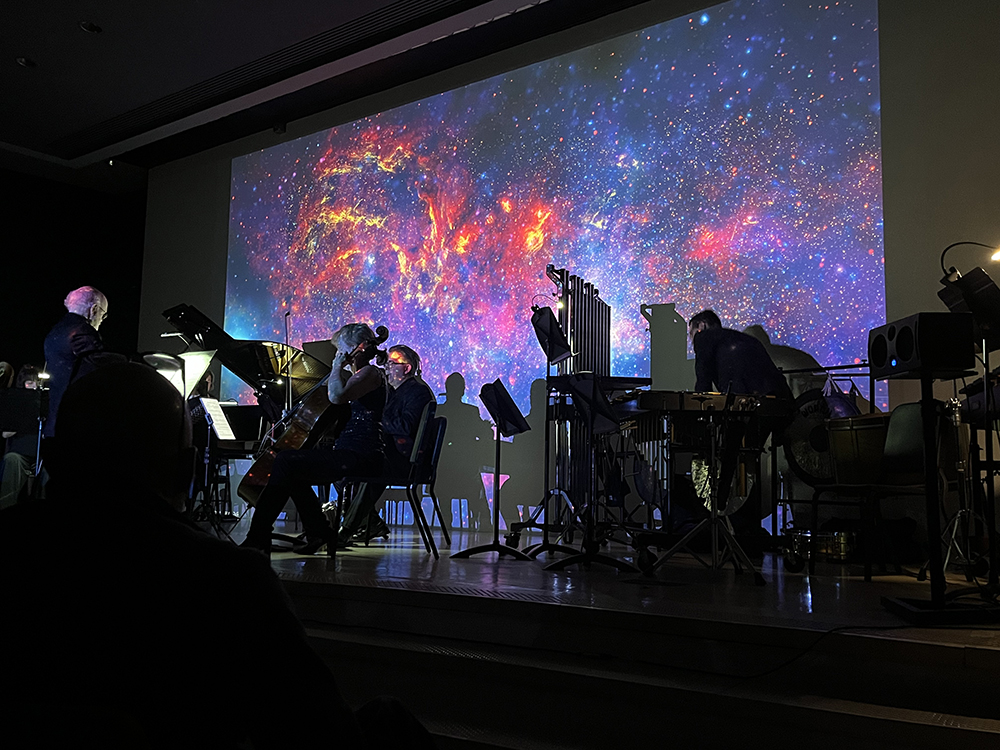
Chandra Documentary Wins Award in Film Festival
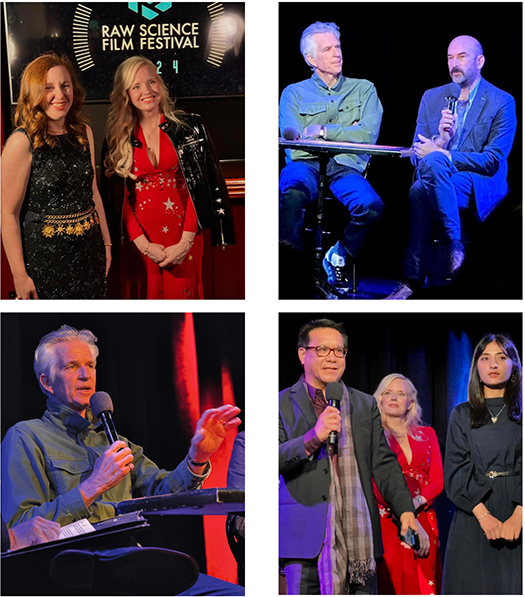
Images from the Raw Science Film Festival Awards Ceremony, featuring
Matthew Modine, Dr. Kim Arcand, Elizabeth Landau, and more.
On Saturday, October 5, the Raw Science Film Festival opened in New York City and the CfA’s Dr. Kimberly Arcand was on hand, along with Elizabeth Landau of NASA HQ, to celebrate the “Listen to the Universe” documentary that won the Industry award for “Best New Media”.
“Listen to the Universe” is a 20-minute documentary produced by the Chandra X-ray Center at the CfA and NASA+ that takes viewers behind the scenes of the team that creates data sonifications.
The Raw Science Film Festival included an awards ceremony featuring a special Q&A with actor/executive producer Matthew Modine, along with screenings and director discussions of "Listen to the Universe" and other selected films. The festival's overall mission is to humanize science and keep fact-based storytelling at the forefront of popular culture.
-Megan Watzke CXC
Participate in New Survey on Color Blindness and Astronomy
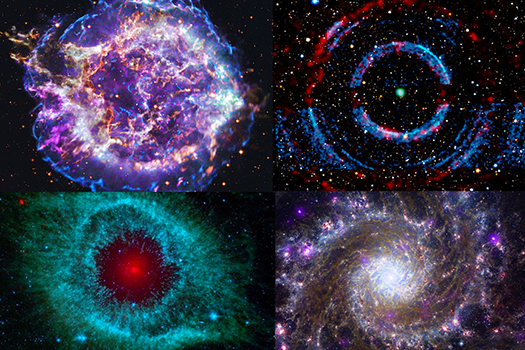
Upper-left: Cassiopeia A; Upper-right: V404 Cygni; Lower-left: Helix Nebula; Lower-right: M74
Credit: NASA/CXC, HST, JWST, SST & Swift
Chandra is committed not only to learning about the Universe, but also to learning about learning about the Universe. Our team have become experts — and partners with others outside of Chandra — on examining how people view and explore space through astronomical data.
Our latest research project involves investigating how people with color blindness experience astronomical images. Please consider taking our survey on this topic. You do not need to have color blindness to participate, but, of course, we are excited to hear from people who do!
The survey is open now. We would greatly appreciate it if you could take the time to fill it out — it’s short! Also, please feel free to share this survey with your family, friends, and colleagues: https://www.surveymonkey.com/r/coloruniverse
Thank you for your help!
Chandra Shows Off its "Scrollytelling"
The Chandra team has been working behind the scenes with the Smithsonian Institution's Digitization 3D Program, to create a new scrolling interactive for Cassiopeia A.
The term "scrollytelling" is real, even if you might not find it in every dictionary. (Though if you look in online ones – especially any that include online terminology – you will.) You may have experienced scrollytelling yourself if you’ve read or explored longer pieces of content on certain platforms or news outlets.
The idea is simple: as you scroll down the page, new information in the form of text, images, and videos will appear. It’s an effective way to convey layers of information, and we’re excited to share this new resource that will let you explore Cassiopeia A in a new way! Cas A, as it’s known, is arguably Chandra's most famous data of a supernova remnant, the leftover material from a star that exploded 340 years ago. Chandra has observed Cas A many times over its 25-year mission, and we have discovered lots about this exploded star -- including how it looks in three dimensions.
Seeing Chandra… From the Ground
It’s been over a quarter of a century since the Space Shuttle Columbia deployed NASA’s Chandra X-ray Observatory into space during mission STS-93. Chandra’s highly elliptical orbit takes it over one-third of the distance to the Moon at its farthest point.
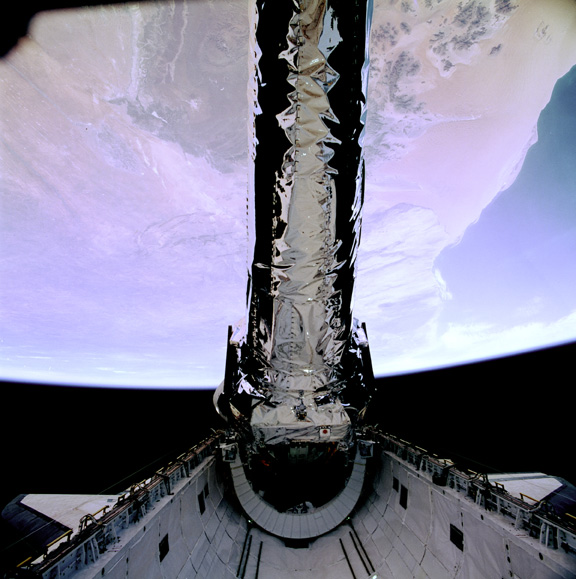
Although Chandra's closest approach to Earth fluctuates extensively with long-term variations in the orbit, it is still typically well more than 600 miles (1000 kilometers) above the surface. Compare that to the International Space Station which orbits our planet at an altitude of about 250 miles, and the Hubble Space Telescope which sits about 320 miles above Earth. It’s clear that Chandra is rather far away from us.
CfA Celebrates Chandra’s 25th Anniversary
Twenty-five years ago, the Space Shuttle Columbia launched into space carrying the Chandra X-ray Observatory. Press releases from the Chandra X-ray Center, CfA, and Smithsonian shared 25 new images with Chandra data to publicize this momentous milestone. A dedicated webpage to Chandra’s 25th birthday, plus the new images and press release, can be found at https://chandra.si.edu/25th/

